The long, remarkable life of the Studebaker Avanti
Some time in March 1963, my parents rented a spring break “vacation apartment” in Fort Lauderdale, Florida. I was 9 years old, and my hobby was building car models—AMT models, specifically. Despite my enthusiasm for the endeavor, I wasn’t very talented in the execution. Actually, I was terrible, and if half a tube of glue was called for, you could expect me to use at least two tubes.
We got to Fort Lauderdale for a beach vacation, and it rained. And rained. And rained, which left us close to nothing to do. In those pre-Yelp, pre-Airbnb days, Dad had simply asked the rental agent how close the place was to the water, to which the agent replied, “Just two blocks!” Of course, Dad meant the ocean, not the drainage canal nearby.
With little to do, it was quickly turning into a cheerless vacation. Then my dad rescued it by taking me to a hobby shop. It was there I found the model that would change my life and set me on a path toward enlightenment and endless pride. I really do mean that, but said path was not without some head-scratching, some embarrassment, and a lifetime of explanations.
I bought AMT’s 1:25-scale plastic Studebaker Avanti. More of a spaceship than a car to this 9-year-old, the real Avanti had a futuristic design with an (almost) grille-less front end, snappy 2+2 seating, and a large greenhouse with a back window easily the size of a Triumph TR2. It was made of exotic fiberglass, and it was very fast. The model was the full manifestation of a car from the future, delivered into my hands that day. Within hours, the Avanti and I had a full working relationship, boy and inanimate object, a car that looked to me like a magic portal to the future. My future. And now, almost 60 years on, it truly was that portal.
The 9-year-old me struggled in school, and friends were tough to come by, but I quickly learned that I could take my love of cars everywhere. I could read about them, I could occasionally ride in them, I could endlessly dream about them, and, if I could live through those seemingly 100 years between ages 9 and 16, I might actually be able to drive them. Cars didn’t judge, cars didn’t criticize, cars didn’t tell me what was wrong with me.
The Avanti and I, we bonded. Not just because it, like me, was a bit of an oddball, but because it is so misunderstood. I get that some people think it’s ugly. I understand when people say it was a failure because it didn’t save a 100-year-old company that had been on its death bed even before an ill-advised 1954 merger with Packard. That stuff didn’t matter to me back then, and it matters even less today.
Right around the same time I got my driver’s license, I managed to get my very own Avanti. It was sitting at Sun Motors on Fairfax Drive in Arlington, Virginia. Avanti Gold, a supercharged 1963 four-speed R-2 model with a fawn and elk interior. My boss, a hardened old soul five years my senior, did the negotiations for me, all of which involved enough convoluted horse trading worthy of a Silk Road merchant four centuries prior.
I have since owned well over 100 of them, which makes me just expert enough to run you through the car’s first four generations.
The Studebaker Years, 1963–64
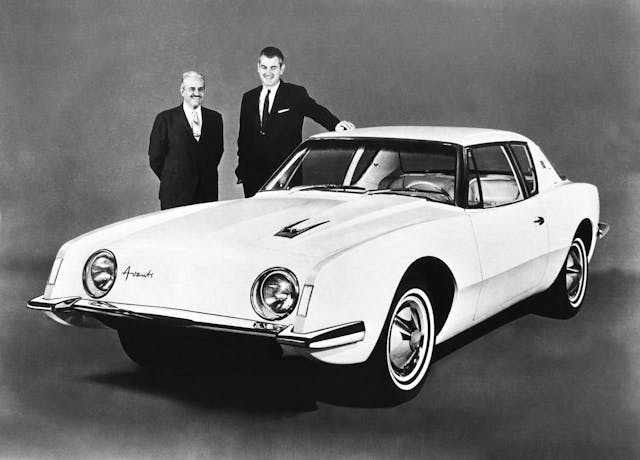
The 1963 Avanti had a 289-cubic-inch Studebaker V-8 as standard and was available in non-supercharged (R-1) and Supercharged models (R-2). The base, and rarely seen, transmission was a three-speed manual; a four-speed manual and a BorgWarner automatic were options. Air conditioning was not available on R-2s, as the Paxton supercharger left no room underhood for an A/C compressor.
All Studebaker Avantis were equipped with Dunlop disc brakes up front and conventional drum brakes in the rear. Options included power steering, power windows, an AM or AM/FM radio (both were rebranded Delco units), tinted glass, left and/or right “Stratovue” exterior mirrors, and a host of other convenience items. All 1963 interiors were two-tone vinyl, with fawn (a light tan) on top and colors such black, turquoise, orange, elk (darker brown), or red below. The carpets were tuxedo “salt and pepper” style (not GM sourced, but similar to those in the C1 Corvette).
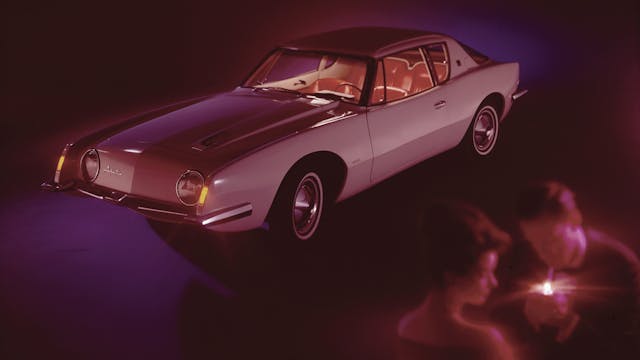
In 1964, a few features were added. The front end received square headlight glass lenses, replacing the previous round lenses. Inside, a tilt steering wheel became an option. The two-tone vinyl interior was changed out for a single color, and the tan painted dashboard and console pieces were replaced with woodgrain vinyl applique. The tan steering wheel also became a brown woodgrain. The bucket seats, lightly disguised copies of Alfa Romeo buckets, got thicker seat backs in last few hundred cars.
An R-3 engine was also added, but only for the last nine cars off the assembly line, in December 1963. The R-3 was bored out slightly, and the Carter AFB carburetor was enclosed in an airbox for better performance. A rumored twin-carbureted R-4 never made it to production.
Getting further into the weeds, running changes on the production line actually gave us some “1963½” models, which featured a 1964-style interior with 1963-style round headlights. Perhaps even more obscure are the cars that were sent to Nevada for something called the “Las Vegas Driveaway.” Those cars, slated to have vinyl applique on the dash and console, instead featured black paint. The rumor is that heat + early vinyl = excessive peeling, so the move was made to avoid angry customers.
Such is the nature of small-volume production, few Avantis from this era are exact duplicates. With six exterior colors offered (including different formulas for red between 1963 and ’64), and nearly endless option combinations, the cars were all semi-personalized. The total number of Studebaker Avanti cars built is generally agreed to be 4643. How many remain is unclear, but my best guess is “somewhat fewer than 3000—perhaps 2600?” Though they are not completely immune to rust, the fiberglass bodies have helped with attrition rates, and the Avanti was always regarded as a “special” car, even when new.
The RQA Avanti II Years, 1965–69
When Studebaker closed its factory in South Bend, Indiana, in December 1963, the Avanti was one of the casualties. Enter two South Bend car dealers, Leo Newman and Nate Altman. The duo bought production rights and much of the parts supply for the Avanti and moved manufacturing to one of the former Studebaker South Bend interior finish buildings. A matter of months later, the Avanti II emerged.
Gone was the distinctive rake to the front end, thanks to a slightly taller new General Motors powerplant. These are known as the RQA cars because of the prefix to their serial numbers, as in RQA-0XX. They were essentially 1964 Avantis, now totally handbuilt, with a Chevrolet 327 V-8 for power. I’m a big fan of the earliest Avanti IIs. Make mine an air-conditioned four-speed with the available 350 horses, please.
The Avanti II quickly became a highly personalized car, as you could order an unlimited combination of paint colors and interior fabric choices. A Grecian Bronze exterior with a marbled blue vinyl interior? Not a problem. Would you like red carpets with that? Despite some outliers, most Avanti IIs were tastefully done, and those that survive tend to be bargains. It really is a lot of car for the money.
The RQB Avanti II Years, 1970–82
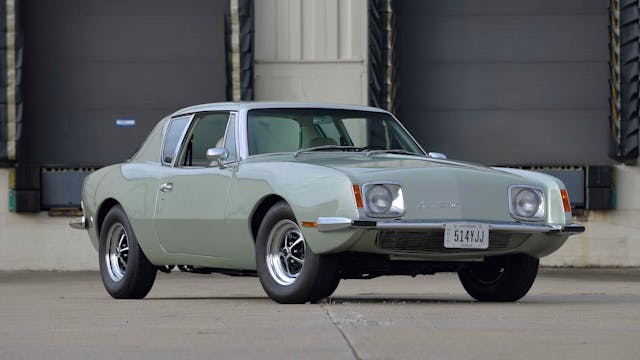
The later RQB cars (again, because of their s/n prefix) are easy to spot thanks to their high-back bucket seats with built-in headrests. As time went by, not surprisingly, the Avanti became more luxurious and lost some of its performance edge. The 327 V-8 was replaced by a 350-cubic-inch GM unit, with a 400 also available in some years.
Increasingly, leather replaced vinyl in the seats, door panels, and trim. The AM/FM radio sprouted a cassette deck or 8-track player. Sunroofs became the norm. The carpeting, once like every other 1960s car, grew a deeper pile, and in some cases, turned shag. After Nate Altman’s death, his brother Arnold took on much of the day-to-day activity of running a small automobile company in the 1970s. The challenges of being America’s fifth or sixth largest (remember Checker and Excalibur?) automobile company were close to legendary. Payroll had to be made, government regulations had to be addressed, and a once-seemingly endless but now dwindling supply of parts had to be procured—at ever increasingly expensive costs. Avanti needed its next savior.
The Steve Blake Years, 1983–85
Washington D.C. real estate developer Steve Blake had been in purchase talks with Leo Newman and Arnold Altman for some time. On October 1, 1982, the transfer of ownership became final.
The first “Blake Avantis” were 1983 models. Steve was a personal friend, and his outgoing nature and vociferous personality made him a true one-of-a-kind. His Avanti vision, never fully executed, was to make an American version of the Porsche 911—an ever-evolving, ever-improving performance and luxury brand.
The costly blade-style chrome bumpers were replaced for 1984 with Kevlar-reinforced fiberglass units, and the change was dramatic. Blake hired chassis engineers, started a racing program, fitted the cars with 305-cubic-inch L69 Camaro V-8s, and used public relations and a touch of advertising in an effort to make the Avanti look and drive fresh in the 1980s. A convertible version was launched for model year 1985, and three production cars were actually built. Despite increasing sales, and plagued by paint problems, Avanti closed its doors for the first, but not the last, time in early 1986.
Although the original Avanti lived on in many forms and with an increasingly interesting list of owners, the original chassis—a Studebaker unit that traced its roots to the 1950s—was in production from 1963 to 1985. Love it or hate it, the Avanti was an American icon of the late mid-century.
What they’re worth now
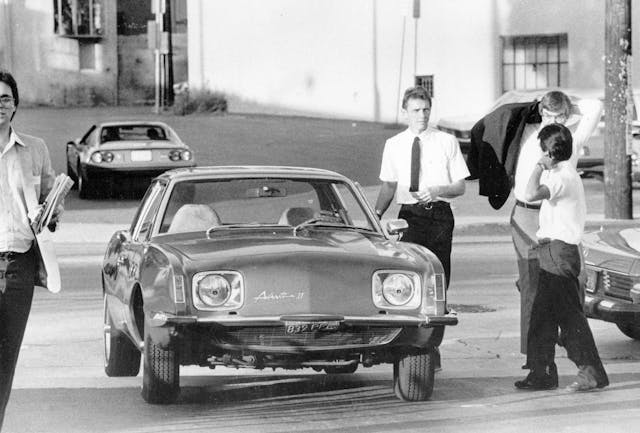
Early Avantis, particularly the ultra-rare ’64 R-3, remain the most coveted of the marque. The Studebaker R-1 and R-2 are both worth more than double the Avanti II models, which represent excellent entry points into the Avanti world. That said, we are seeing renewed interest in early Avanti II cars, as well as Blake 1983–85 cars. Interest in all Avanti generations skews heavily toward baby boomers, though our quote data shows Gen X drawn to the early cars, while later cars have garnered a significant amount of attention with Gen Z.
The Avanti’s trajectory is strikingly similar to that of the Cord 810/812: the last dying effort of a dying Indiana car manufacturer, available in naturally aspirated or supercharged form, sporty and fast, with styling that was initially polarizing but no longer looks out of place.
I still have fond memories of that rainy Fort Lauderdale vacation half a century ago, and I’ve never spent too much time wondering how my life would be different if I had picked up a Mercedes 300SL roadster model instead of the Avanti. We were pals, the Avanti and me, and we still are.
***
Check out the Hagerty Media homepage so you don’t miss a single story, or better yet, bookmark it. To get our best stories delivered right to your inbox, subscribe to our newsletters.
Via Insider

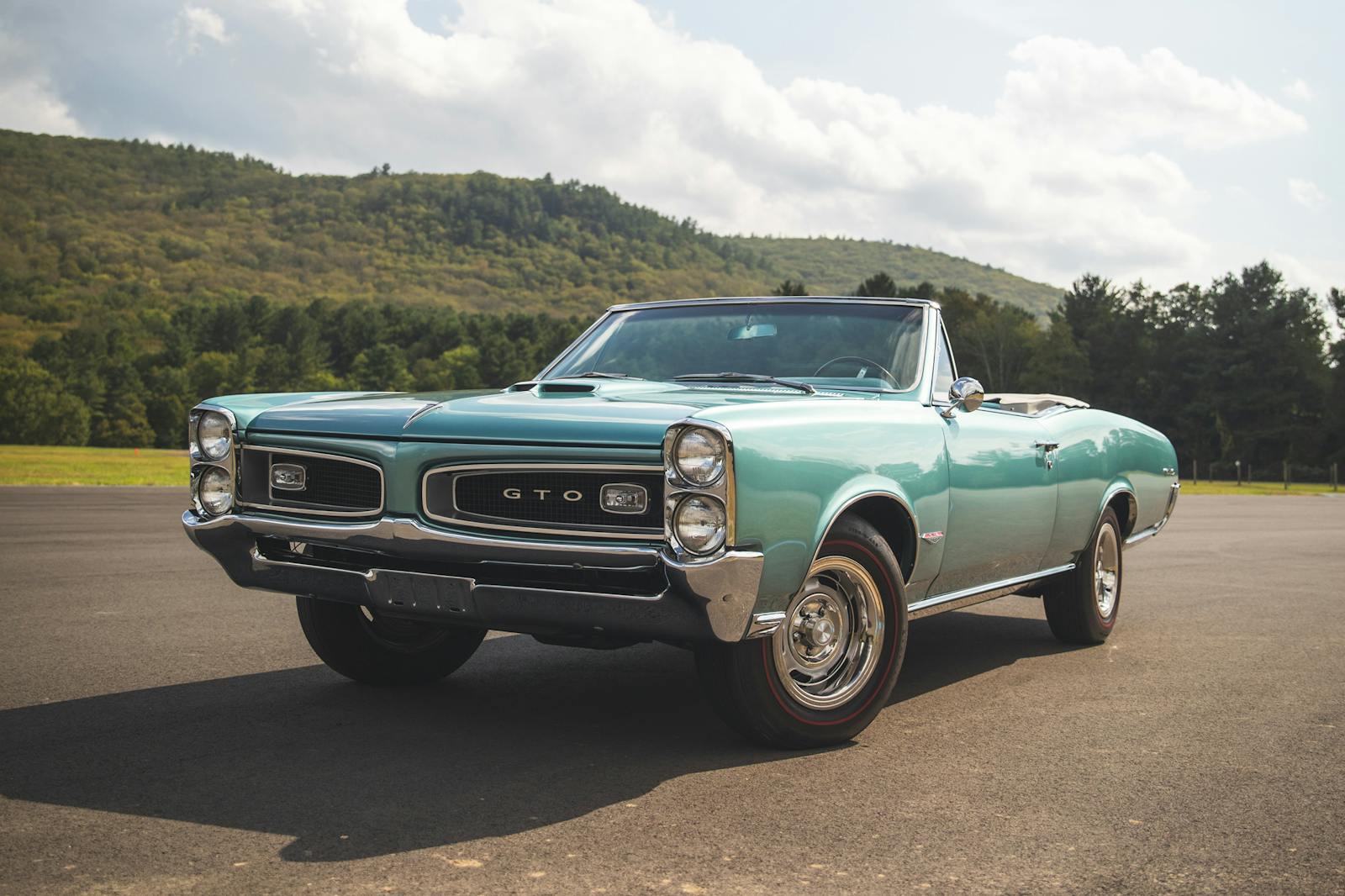

Boy, this guy knows Stude’s history! I have owned three Studebakers and this article is an excellent retelling of Avanti. Kudos.
When I was about 9 years old I too remember being introduced to my first Avanti. It was my dad’s wrecked 63 with a dual quad Buick nailnhead motor and a four speed. My brother and I would sit in it and pretend to drive and shift the gear making our engine sounds with our voices. We had the models of it as well. That car was given to my uncle in Ft Lauderdale, and I do not recall what happened to it. Fast forward 50 years, my brother and dad bought a 63 project car that was partially restored, and for years it sits unfinished. This car is for sale. It also comes with a Blake era parts car. Cars are located in the Phila, Pa area. If interested, please text me at 707-656-6399.
My father purchased a 1963 gold R2 it was his dream car. He owned the car and actually hid it away in the basement of our house behind bars. My father passed away from Alzheimer’s and passed the car to me. You would not believe how many people ask about the car when you drive it. And when it is in for service, I always receive messages from the mechanics that there were a few people asking if the car was for sale. Lots of memories in this Studebaker Avanti. I’m not sure I could ever sell my fathers car. Just a total reminder of him.
You’ve owned a hundred of them? Congratulations! That could be the basis for many more articles. Or even a whole encyclopedia.
My feelings (and those of many other 13-year old aficionados) when the Avanti debuted were, “Wow! What a cool car! America needs another Corvette!” Which it did. And still does.
I rate the impact of the Avanti on a level with the 1957 Thunderbird, 1958 Corvette, 1966 Riviera, the 427 Cobra, and the Viper.
There is a brief video on line titled, “Bonneville Record Breaker,” a Studebaker promotional film. Andy Granetelli records official runs at the salt flats with the heady speed of 172 MPH in 1962 in what appears to be an round headlight R3 with the enclosed Carter AFB and Paxton blower. The narration says the displacement is 299 CID, so it is apparently the over-bored 289. R2 and R3 engines were also fitted with domed pistons and larger hemispherical chamber heads.
The most surprising thing about Andy Granetelli’s Bonneville runs is that they were done in a barely modified Avanti. Apparently the only thing done was to add a second roll bar to augment the internal factory roll bar. Even the factory radio was left in place. Tires were stock Sears Interstate bias ply tires of the day, mainly because Studebaker had an agreement with Sears. It must have been quite a mail-biter for Andy hoping those tires wouldn’t disintegrate at 172 MPH. Raymond Lowe and a team of designers put together the Avanti plans based on a modified Lark in a rented home serving as a design studio in about six weeks. That was done without wind tunnels or any fancy engineering. That is quite a credit to Lowe and his team’s intuition, pulling off a car capable of astonishing straight line speed. There was a bit of a limitation that above about 130 MPH, the rear glass could be blown out due to the air pressure if the windows were left rolled down.
Wonderful cars!
Raymond Lowey was a genius using his abilities to make this out of a Lark.
I got to drive one in the 70’s – R2- 4 speed and was surprised that it compared favorably to my 69′ Barracuda 340 Formula S.
I must have been around 10 when I first saw the Avanti outside the dealership. What struck me the most were the two huge exhausts. Maybe at my height they were close to eye level.
Have always loved the Avanti, especially the Avanti II cars. I owned a ’69 Ferrari 365 GTC that I actually considered selling in Fall of 1976 to buy an Avant II. I never followed through, though; kept the Ferrari until 1989. But I DID keep all the literature I received from the Avanti II company in 1976: 1) A copy of Avanti Owners Association Newsletter No. 16, 1970 (feature: “Avanti II – 1970, A Photo Tour of Avanti Motor Corp.”), and 2) an Avanti Sales Information Kit for 1977. The latter includes the letter to me from the factory dated Nov. 16, 1976; various reprinted magazine articles and test drive reviews; beautiful color brochures; Q-and-A brochure regarding purchasing an Avanti II; vehicle option checklist and purchase order form for 1977 Avanti II models; and an inventory listing of new 1976 Avanti II cars still available at that time for purchase direct from the factory. All great memorabilia! If any Avanti aficionados are interested in purchasing these items, contact me at 520-982-6830 or email wgbusaret@aol.com. I’m an “older” guy, and this stuff belongs in good hands now for preservation! –Bill Blissett, LTC, USA, Ret.
The first time I sat in a 1963 Avanti, at the age of 16, I fell in love with the body style and the red instrument panel lighting.
I loved these cars when I was in high school. Thanks for the article.
We had an Avanti II in my neighborhood when I was a kid in the 80’s.
As a kid I remember Avanti being located in Villa Rica, GA. A quick internet search says that they were built on the firebird platform. I guess they really weren’t real avantis. I really didn’t care that much for their appearance but the really old ones actually look cool. I guess my taste has matured.
Loved the article!
I bought that same AMT Studebaker Avanti model at the Woolworth’s store in downtown Morgantown, WVa in 1969 or 70. I was amazed by the drawings on the box and I just had to have it. I had to borrow $0.75 from my big sister to afford it.
Decades later, I purchased 63R-2302, an Avanti Red R2 with the Borg-Warner automatic, fawn and elk De-Luxe interior, but black carpets. I couldn’t complete the restoration before the Navy moved me to Hawaii, so it is being finished by a restorer in Indiana.
Hopefully this time next year, I will be annoying my neighbors in Waikiki with that 289 rumble!
If anyone is interested, there’s a 1967 Avanti II coming up for auction in the future at a copart lot in Florida with “fresh water” damage and a “certificate of destruction”. It doesn’t look like a total loss, but water damage is difficult to repair. If I were on the east coast, I would bid on it. I’m sure the search for the serial number history led to this article coming up in my news feed.
Great article about a great car. Oh, I would love, and could probably afford an early Avanti II but it wouldn’t fit in my garage and I could never leave such beauty to suffer in the elements.
Side note: I put a lot of AMT model cars together, including a couple Avanti’s. But to the best of my recollection, all were 1/24 scale.
A terrifically written article by Dave Kinney. It is hard to do justice to the complete history of the Avanti in only a few pages. Books have written about it. I own 63R1574 (R1) which was the Keystone Studebaker Club raffle car back I believe in 2018. I purchased it from the winner in 2020 after dreaming about it for 57 years. I felt the same way as Dave and his article really hit home with me. I tell people that if it wasn’t for the skinny steering wheel you would never know you were driving a 60+ year old car! No rattles, no squeaks, no groans and plenty of power and braking. I own a number of vintage cars but none compare to the Avanti! Get one now before they become 6 figure cars and they will.